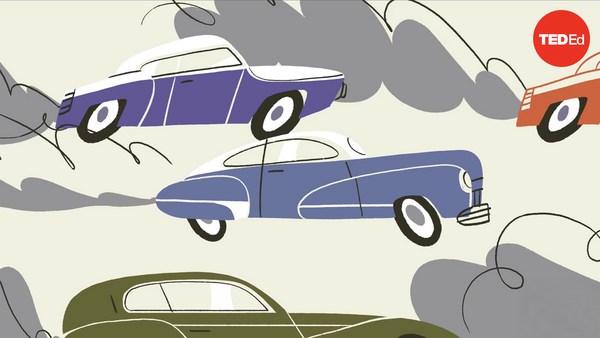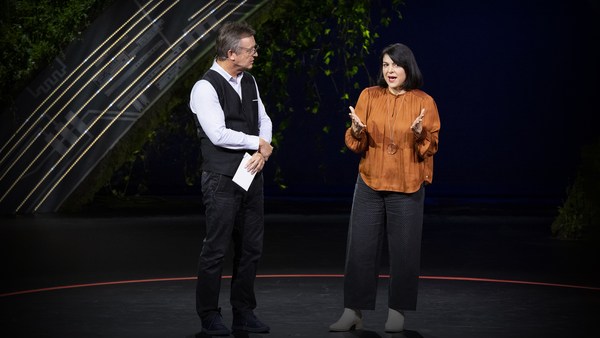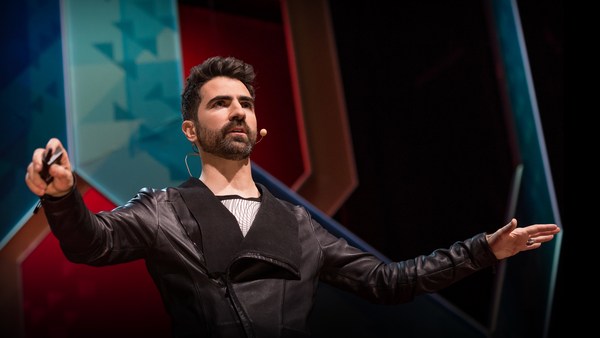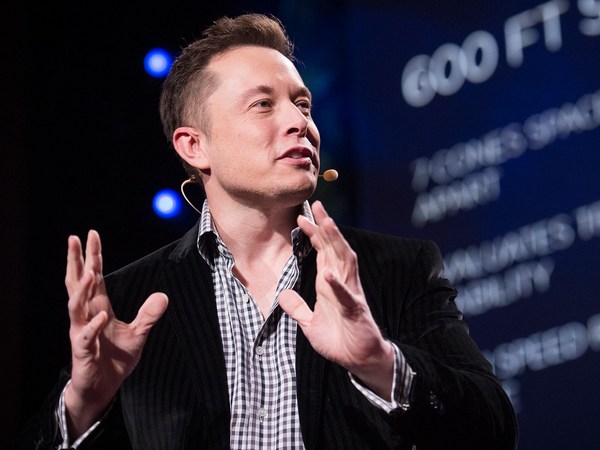Have you ever had to have a really tough conversation with your parents? Well, I remember one like yesterday. I can still feel the knot in my stomach, 31 years later. Just imagine me. I was a fresh engineer out of Michigan State University with my first real job offer, with guess what? My dad's number one rival.
You have to understand, I grew up in Flint, Michigan. My dad was a GM guy all the way, like his dad before him, his brother and all of his friends. They were GM lifers. But thankfully, my dad was satisfied with the fact that at least I'd be working for one of the "big three."
Now, when my granddad started working in the auto industry in the mid 1940s, it was booming. Fun fact: popular cars at that time were the Chrysler Town and Country Hardtop, the Chevy Stylemaster and the Ford Mercury woody station wagon. It was the modern age of transportation.
Now, today, we're experiencing another major transformation. Many are calling it the electric vehicle revolution. Now with that comes unprecedented change that will require us to build new capacity and collaborate in ways that we've never seen before.
Now the change begins with sustainable products that provide better experiences and greater benefits for the people that use them. We will need to build new capacity to meet the demand, support infrastructure and build a responsible supply chain. All while collaborating in ways that we'd never seen before with new partners, like working with Tesla to bring more fast chargers to more consumers. And now other manufacturers are following suit. Now, I sincerely hope that people leading companies like ours will work together, collaborate and learn, and help each other succeed.
Now our goal is to become carbon-neutral no later than 2050, and our carbon footprint is as big as Australia's. We know that we need to make the transition to electric vehicles and clean energy fast. Now with that, to transition and to make sure that we can get to our long-term goals, this is what needs to happen.
First, we must continue to make awesome products. That can't go away. Share a couple of pictures with you. This is my uncle Daniel, this is my uncle Willy. They both drove premium foreign cars for decades. You know, I began to work on them right away to make the switch to Ford.
(Laughter)
So in 2011, I actually pitched to them the Lincoln MKZ Hybrid. This vehicle had the latest safety technology, it had an interior like a fighter jet, it had a smooth ride, a distinctive look, 41 miles per gallon. And it was built by an American company in their home state of Michigan. And it was the same price as the gasoline version, but way better for the environment. They each bought one. The lesson is --
(Applause)
We can't make the change feel like a trade-off. We are building on the strength of our current products. We are electrifying our most iconic vehicles first, like the Mustang and the F-150 truck.
(Applause)
Now tell me this is not a hot car.
(Laughter)
It's all electric, instant torque, 0 to 60, in just 3.5 seconds.
(Cheers)
And look at that chic design.
(Laughter)
But my point is, when we improve our vehicles to be more sustainable, we also have to make them better. And there's no better feeling than driving right past a gas station on my way home.
(Laughter and applause)
Knowing that I can get a full charge just overnight. Now, my daughter and her friends are always bringing their cars home on empty. Wouldn't be a problem if they drove electric.
(Laughter)
Now let's look at the F-150 Lightning. The F-150 Lightning can power your house up to ten days. Imagine the impact on rural communities if they didn't need a generator when the power went out. People who drive electric vehicles can also light and heat up a campsite. They can charge up a work area, supercharge a tailgate party --
(Laughter)
and even charge another electric vehicle. Now these are product improvements that my granddads could never have imagined.
Now with that, with all these new products coming to the market, next comes capacity. We have to build and invest in new facilities and talent. Now that's true for any industry transitioning to greener goals and strategies. Now I'll tell you a few things that Ford is doing. But we're not alone in this area.
In Tennessee, we are investing more than five billion dollars in electric vehicle manufacturing for trucks and advanced batteries. In all of our facilities, our goal, for either new or old, is to conserve and reuse water, use 100 percent carbon-free electricity and send zero waste to landfill. And we are also investing in talent, we're investing in education and training, and we're also listening to the communities where we live in an operate. That's huge for industries like us. We have to listen to people other than ourselves.
Now I tell you, in Tennessee, we've created more than 6,000 new jobs. And again, we're not doing this alone. As an industry, we have invested more than 120 billion dollars in electric vehicle manufacturing. We’ve created 143,000 new jobs in the last eight years and 40 percent of that, 40 percent of that happened since the US government approved the climate and clean energy legislation.
(Applause)
And again, we're not alone in this. We continue to make progress, but we're going to need to do more. We need to build ... more infrastructure here.
Infrastructure is critical. We will need charging stations as plentiful and convenient as gas stations. In the US, we have about 145,000 gas stations and only about 23,000 fast-charging stations. In order to make the move to electric vehicles fast, we'll need many, many more. Now, I'm not saying we're going to need one on every corner, but we will need many, many more. We need every community, whether rural or urban, wealthy or low-income, everyone will need access to charging. And the charging station, we must bring lighting, shelter, security, restrooms, basic amenities. These are things that we will need to move forward. And one hopeful move is the new federal spending that will allow states to deploy fast-charging every 50 miles along major highway corridors.
And the benefits are real. Let's take a look at the 110,000 electric vehicles that Ford has put on the road since 2021. These vehicles have the potential to save five million tons of carbon emissions over their lifetime. That's equivalent to CO2 saved by not burning 600 million gallons of gasoline.
Like my family before me, I am proud to work alongside my teammates in the automotive industry. We have come a long way. It's so gratifying to see electric vehicles on the road. To move from aspiration to reality. To see plants dedicated to building electric vehicles. But outside of the US, in Asia, where I lived for three years, and Europe, they're way ahead of us.
Here's what we need to do to make sure that we're ready for an all-electric future. We need policy makers to harmonize environmental regulations. We need one framework to drive a resilient grid faster. We need to strengthen the supply base here and still create more jobs here. We have the technology, we have the leadership, we have the ingenuity to respond to the environmental crisis with courage. And I'll tell you, entrepreneurs, venture capitalists, manufacturers, everyone is beginning to understand and accept the social responsibility to build a future of electric vehicles here. And they are also seeing the business opportunity before them. And I'll tell you, as a person who's dedicated my entire career to sustainability, the road ahead is paved with promise.
And it might surprise my dad, it's not going to be about Ford versus GM or Stellantis or even the US versus Asia or Europe. We all have to work together to build a better future for the next three generations of my family and yours.
Thank you.
(Applause)





